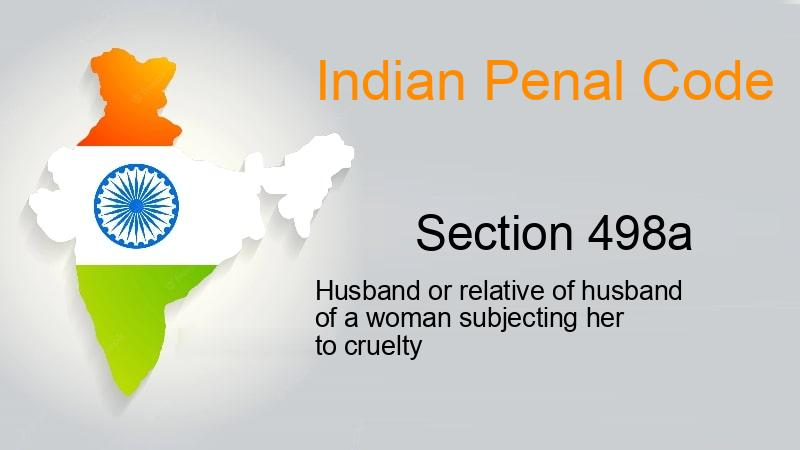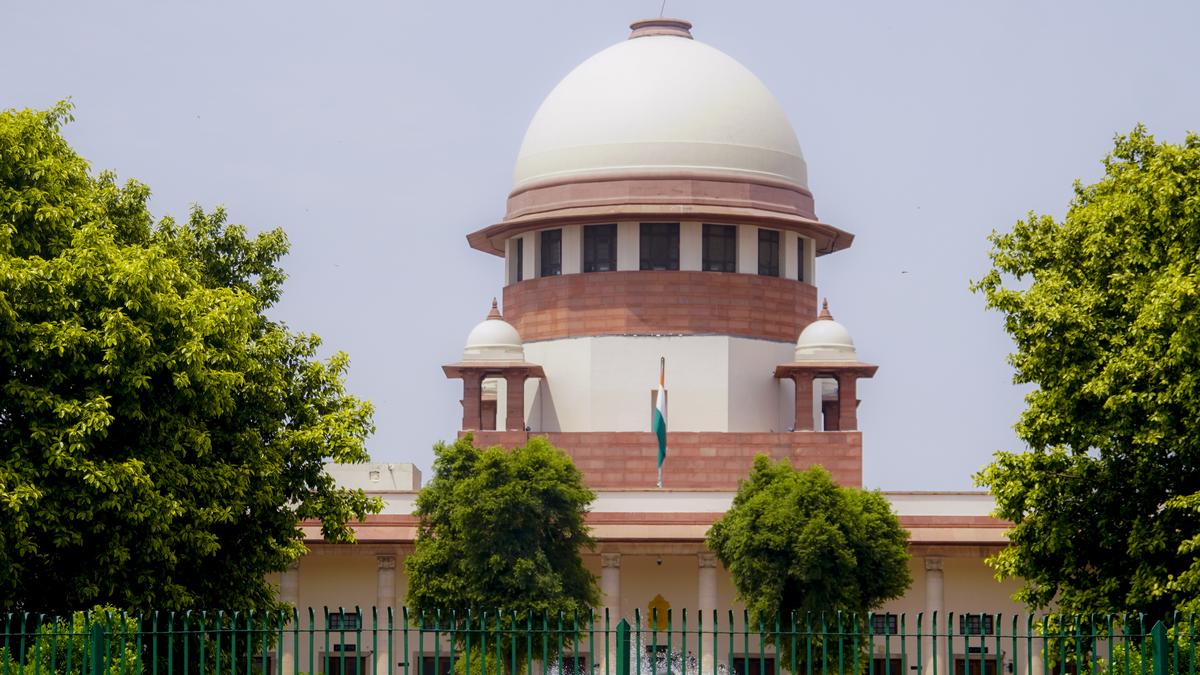
Copyright infringement not intended
Context: A 46-year-old man, who was convicted under Section 498A of the IPC for cruelty to his wife, got relief from the Karnataka High Court. The court quashed the conviction on the ground that the woman was his second wife and their marriage was invalid. The court also noted that the woman was aware of the man's first marriage and still entered into a relationship with him.
Key points from the court's judgment
- Conviction Set Aside: A man was convicted under Section 498A of IPC, which deals with cruelty towards a married woman by her husband or in-laws. However, the High Court set aside his conviction.
- Complainant as Second Wife: The complainant-woman claimed to be the second wife, and they lived together for five years and had a male child. But later, she developed health issues, and her Husband allegedly started harassing and subjecting her to cruelty.
- Grounds for Setting Aside Conviction: The High Court's judgment was based on the finding that the complainant was the second wife of the person. As per the court's interpretation of the law, a complaint filed by the second wife against the husband and her in-laws under Section 498A is not maintainable.
- Legal Validity of Second Marriage: The court emphasized that the prosecution needed to establish the legal validity of the second marriage. Since the evidence indicated that the complainant was the second wife, and the marriage would be "null and void," the court ruled that the offence under Section 498A could not be sustained.
- The High Court referred to two judgments of the Supreme Court (the Shivcharan Lal Verma case and the P Sivakumar case) to support its decision that if the marriage between the husband and wife is null and void, the offence under Section 498A cannot be sustained.
Overall, the High Court's judgment highlights the importance of establishing the legal validity of marriages in cases related to Section 498A of IPC and clarifies that a second wife's complaint may not be maintainable under certain circumstances.

Section 498A of the Indian Penal Code (IPC)
- Section 498A of IPC is a provision that criminalizes cruelty by a husband or his relatives towards a married woman. It was introduced as an amendment to the IPC to protect women from domestic violence and dowry harassment.
- The section defines cruelty as any wilful conduct that causes physical or mental harm to the woman, drives her to suicide, or harasses her with the intention of coercing her or her relatives to meet any unlawful demand for property or valuable security.
The main features of IPC Section 498A
Offence of Cruelty
- Section 498A deals with the offence of cruelty towards a married woman by her husband or his relatives. It criminalizes any act of harassment or cruelty, whether mental or physical, which is inflicted upon a woman with the intention of coercing her or her relatives to meet unlawful demands, including dowry.
Protection for Married Women
- The primary objective of Section 498A is to protect married women from dowry-related violence and harassment. It aims to provide legal recourse to women who face cruelty in their marital homes due to dowry demands.
Cognizable Offense
- The offence under Section 498A is cognizable, which means that the police have the authority to arrest the accused without a warrant. This provision allows for immediate action in cases of reported cruelty.
Non-Bailable Offense
- Section 498A is a non-bailable offence, which means that those accused of this offence may not be granted bail as a matter of right. Bail can be granted at the discretion of the court, considering the nature and gravity of the allegations.
Gender-Neutral Provision
- Section 498A is a gender-neutral provision, meaning it can be invoked against both men and women involved in the offence. While the primary focus is on protecting married women, the law does not exclude the possibility of a woman being charged under this section if she is found guilty of subjecting another woman to cruelty.
Complaints by the Victim or Relatives
- The complaint under Section 498A can be filed by the victim herself or by any person related to her. It allows family members or close relatives to come forward and report the offence on behalf of the victim if she is unable to do so herself.
Punishment
- Those found guilty under Section 498A can be sentenced to imprisonment for up to three years. The severity of the punishment may vary based on the nature and gravity of the offence.
Social Significance
- Section 498A holds significant social importance as it addresses the deep-rooted issue of dowry-related violence in Indian society. It empowers women to report domestic abuse and seek legal protection against cruelty in their marital relationships.
It is important to note that while Section 498A serves to protect vulnerable women from domestic violence and harassment, there have been concerns about its misuse. To prevent any misuse, the Supreme Court of India has issued guidelines to ensure fair and judicious implementation of the provision.
Significances of Section 498A
Protection of Married Women
- One of the primary significances of Section 498A is the protection it offers to married women from cruelty and harassment by their husbands or in-laws. The provision serves as a legal safeguard against dowry-related violence and abuse, which has been a persistent problem in some parts of Indian society.
Deterrent Effect
- Section 498A acts as a deterrent against individuals who may contemplate subjecting married women to cruelty or harassment for dowry demands. The provision's stringent provisions, including non-bailable offences and the potential for imprisonment, send a strong message about the seriousness of such offences.
Empowerment of Women
- By criminalizing cruelty against married women, Section 498A empowers women to report instances of abuse and seek legal redress. It encourages women to assert their rights and stand against domestic violence and harassment in their marital homes.
Social Awareness and Change
- The introduction of Section 498A has contributed to raising social awareness about the issue of dowry-related violence and its negative impact on women's lives. It has sparked discussions and debates about the need to address this social evil and promote gender equality.
Legal Recourse
- Section 498A provides legal recourse to victims of dowry-related cruelty, allowing them to approach the authorities and seek justice for the harm they have suffered. The provision ensures that perpetrators of such offences are held accountable for their actions.
Gender-Neutral Approach
- While the primary focus is on protecting married women, Section 498A is a gender-neutral provision, allowing the law to be applied equally to both men and women involved in the offence. This approach ensures that the law does not discriminate based on gender and applies equally to all perpetrators of cruelty.
Combating Dowry Demands
- By penalizing dowry-related offences, Section 498A contributes to the larger goal of combating the practice of dowry and its associated violence. It works in conjunction with other laws aimed at eradicating dowry-related customs and promoting gender equality.
Preventive Measures
- The existence of Section 498A acts as a preventive measure, dissuading potential offenders from indulging in dowry-related harassment and cruelty. The fear of legal consequences may restrain some individuals from engaging in such harmful practices.
.jpg)
Steps taken by the government and the judiciary
- The Ministry of Women and Child Development has issued guidelines and advisories to the states and union territories to ensure proper investigation and prosecution of cases under this section.
- The Supreme Court has issued several directions and judgments to prevent the misuse and abuse of this section by false or frivolous complaints. Some of these are:
- In Rajesh Sharma v/s State of UP (2017), the court laid down certain safeguards for the accused, such as constituting family welfare committees to scrutinize the complaints, granting anticipatory bail to the husband and his relatives, etc.
- In Arnesh Kumar v/s State of Bihar (2014), the court directed the police to follow certain parameters before arresting the accused, such as verifying the allegations, recording reasons for arrest, etc.
- In Sushil Kumar Sharma v/s Union of India (2005), the court observed that this section should not be used as a weapon for vengeance or personal vendetta by disgruntled wives.
Challenges
Misuse and False Cases
- One of the primary challenges is the misuse of Section 498A, where false cases are filed against innocent individuals out of malice or to settle personal scores. Such misuse can lead to harassment of the accused and their families and may undermine the credibility of genuine cases.
Arrest without Sufficient Evidence
- The provision allows for the immediate arrest of the accused without a warrant in cognizable cases. In some instances, arrests are made based solely on the complaint, even before a thorough investigation takes place. This has led to concerns about the arbitrary arrest of individuals without sufficient evidence.
Pressure on Families
- The wide ambit of the provision allows for the arrest and prosecution of not only the husband but also his relatives, including elderly parents and distant relatives. This can result in undue pressure and harassment of the entire family, including innocent family members who may have no involvement in the alleged offence.
Delayed Trials
- The large number of cases under Section 498A and the burden on the judicial system can lead to delays in trial proceedings. Prolonged trials can cause emotional and financial stress to both victims and accused individuals.
Reconciliation and Mediation Challenges
- The aggressive implementation of the provision sometimes creates hurdles in attempts at reconciliation and family counselling. In some cases, reconciliation efforts may be hindered due to the automatic arrest of the accused.
Burden of Proof
- In cases under Section 498A, the burden of proof lies on the accused to establish their innocence. Proving a negative can be challenging and this can lead to difficulties in defending oneself against false allegations.
Social Stigma
- The accused individuals and their families may face social stigma and reputational damage even if they are later acquitted or found not guilty. This can have long-term consequences on their personal and professional lives.
Lack of Awareness
- Many people, including victims, are not fully aware of the provisions of Section 498A and the legal remedies available to them. This lack of awareness can deter some victims from seeking timely legal intervention.
Fear of Retaliation
- In some cases, victims may hesitate to report domestic violence or cruelty due to fear of retaliation from their abusers or their families.
Overburdened Legal System
- The sheer volume of cases under Section 498A can put a strain on the already overburdened legal system, leading to delays and inefficiencies in the judicial process.
Addressing these challenges requires a careful balance between protecting genuine victims of domestic violence and preventing the misuse of the provision. The judiciary and the government have been taking steps to address some of these issues, such as issuing guidelines to prevent arbitrary arrests and promoting alternative dispute resolution mechanisms like mediation and family counselling.
Way Forward
Establishing Family Welfare Committees
- To prevent the misuse of the provision, the Supreme Court of India has suggested the establishment of Family Welfare Committees at the district level. These committees can act as a screening mechanism to examine the veracity of complaints before making arrests. This step can help reduce the number of false cases and provide an impartial assessment of the allegations.
Mandatory Mediation and Counseling
- Encouraging mandatory mediation and family counselling before proceeding with legal action can help in resolving marital disputes and restoring peace within families. This approach promotes reconciliation and may prevent unnecessary litigation.
Legal Awareness Programs
- Conducting legal awareness programs, especially in rural areas, can educate people about the provisions of Section 498A, its intent, and the consequences of its misuse. This can empower women to report genuine cases of cruelty and help in dispelling misconceptions about the law.
Empowering Investigative Agencies
- Strengthening investigative agencies and providing them with the necessary resources can expedite the process of gathering evidence and conducting thorough investigations. This can help in presenting a strong case during trials.
Fast Track Courts
- Setting up more fast-track courts to handle Section 498A cases can expedite the trial process and ensure timely justice for victims. This approach can help in reducing the backlog of cases and prevent delays in delivering justice.
Training for Police and Judicial Officials
- Conducting regular training programs for police officers, prosecutors, and judicial officials can sensitize them to the nuances of domestic violence cases. This training can enhance their understanding of the complexities involved and enable them to handle such cases with empathy and diligence.
Protection for the Accused
- Introducing safeguards to protect the rights of the accused, such as ensuring that arrests are made only when there is sufficient evidence and following due process, can prevent the misuse of the provision and avoid undue harassment of innocent individuals.
Strengthening Support Services
- Providing comprehensive support services to victims of domestic violence, including counselling, legal aid, and shelter homes, can help in addressing their immediate needs and empowering them to seek legal redress.
Encouraging Gender-Neutral Laws
- Exploring the possibility of introducing gender-neutral laws to address domestic violence can ensure that both men and women facing cruelty in their marital relationships receive adequate protection under the law.
Continuous Review and Amendments
- Periodically reviewing the implementation of Section 498A and considering amendments based on feedback and experience can help in refining the provision and making it more effective in achieving its objectives.

Conclusion
- Section 498A of IPC is a progressive and beneficial law that aims to protect women from cruelty and violence in their marital homes. However, it also needs to be implemented and interpreted with caution and care, so that it does not become a tool of oppression or exploitation. It is hoped that with proper awareness, education and reform, this section will serve its purpose of ensuring justice and dignity for women, as well as harmony and peace for families.
Must-Read Articles:
MARITAL RAPE: https://www.iasgyan.in/daily-current-affairs/marital-rape-15
|
PRACTICE QUESTION
Q. How does Section 498A of the Indian Penal Code (IPC) aim to protect women from domestic violence, and what are its key features? What are the major challenges faced by the legal system in effectively implementing and enforcing Section 498A, and ensuring justice for victims? Considering the issues of both genuine cases and false allegations, what could be a balanced way forward to safeguard the rights of women while preventing misuse of Section 498A?
|
https://www.thehindu.com/news/national/karnataka/second-wife-cannot-complain-against-husband-under-section-498a-of-ipc-karnataka-hc/article67109523.ece
Array
(
[0] => daily-current-affairs/section-498a-of-ipc
[1] => daily-current-affairs
[2] => section-498a-of-ipc
)









